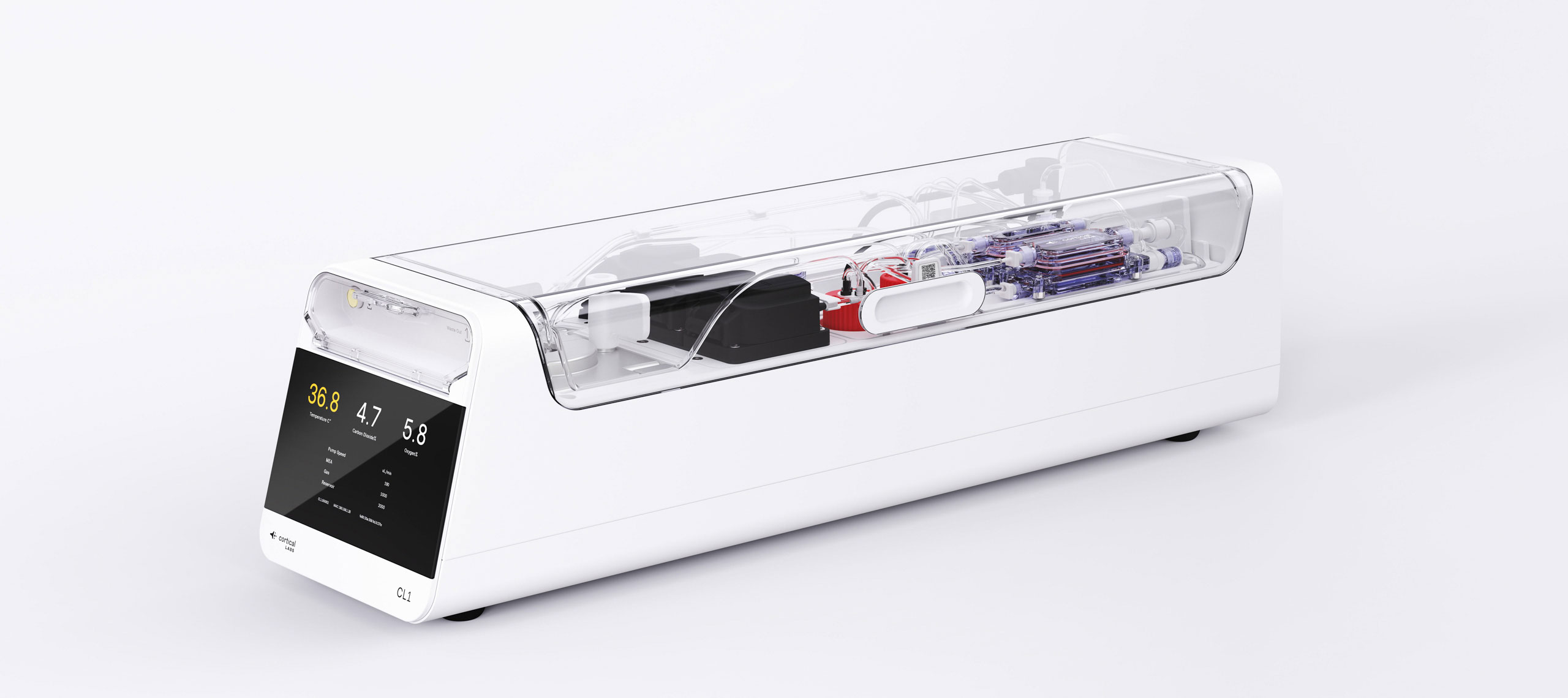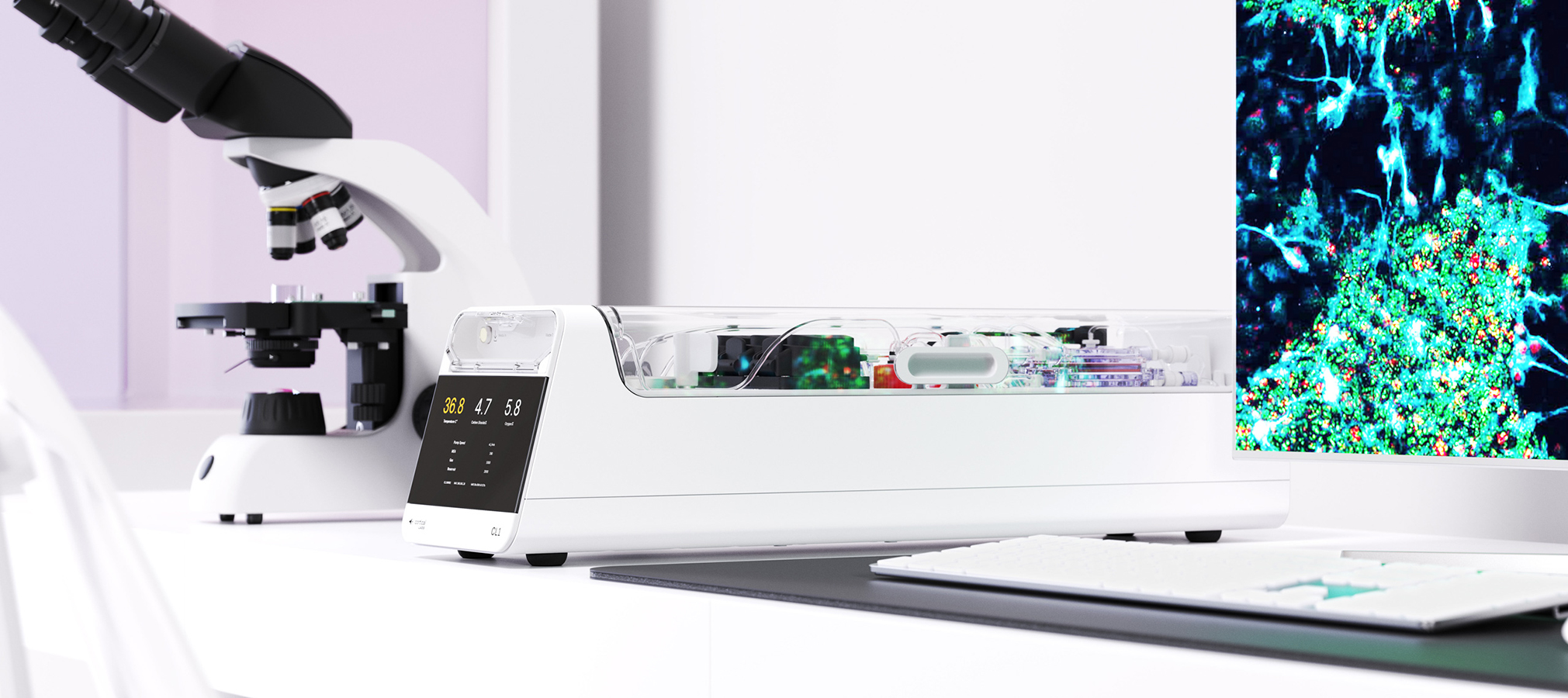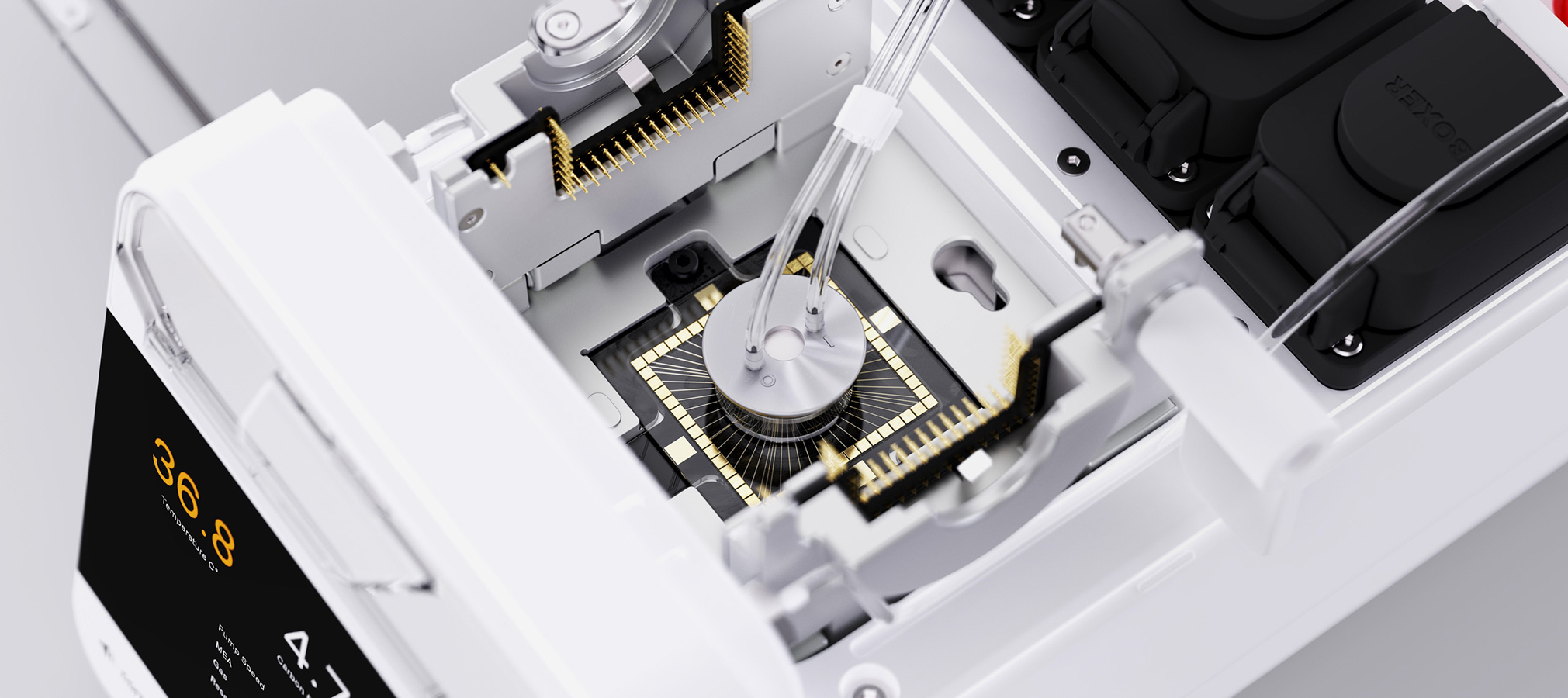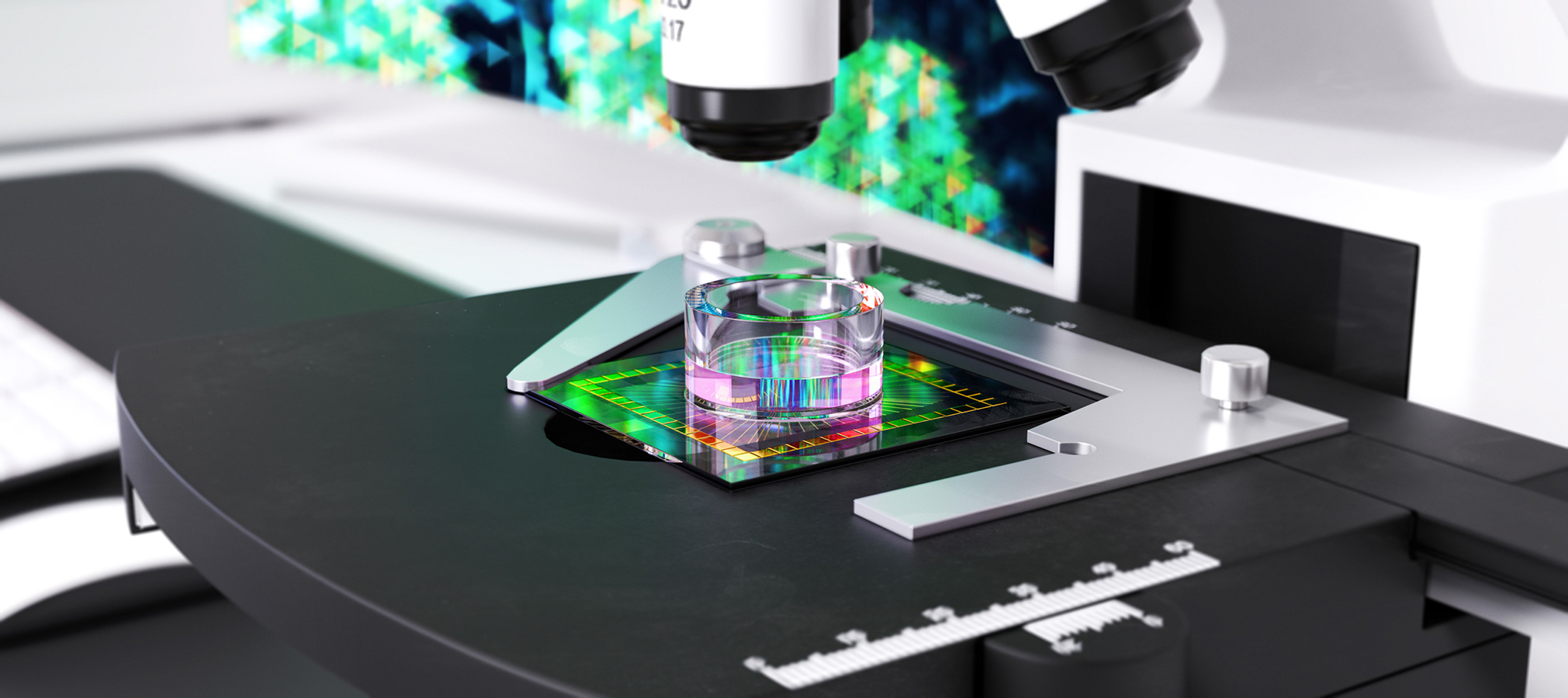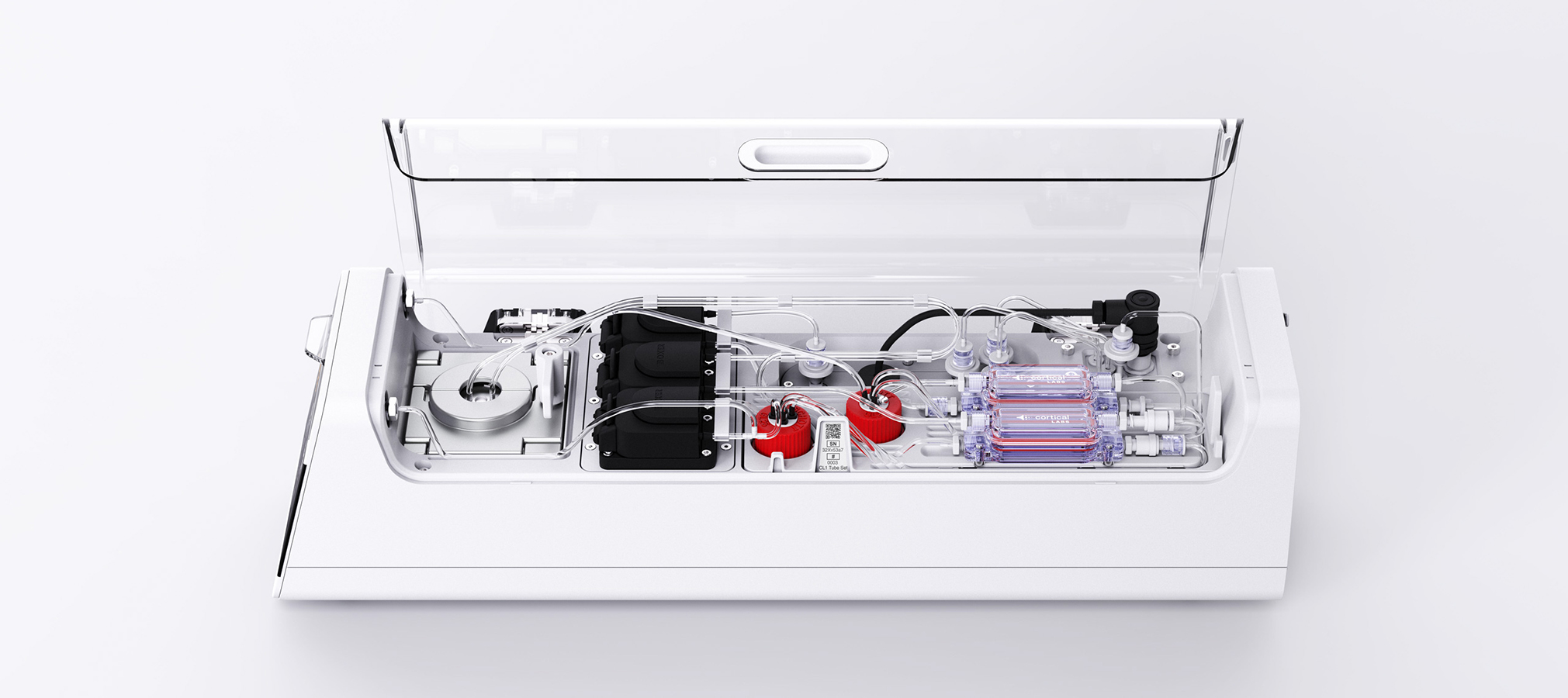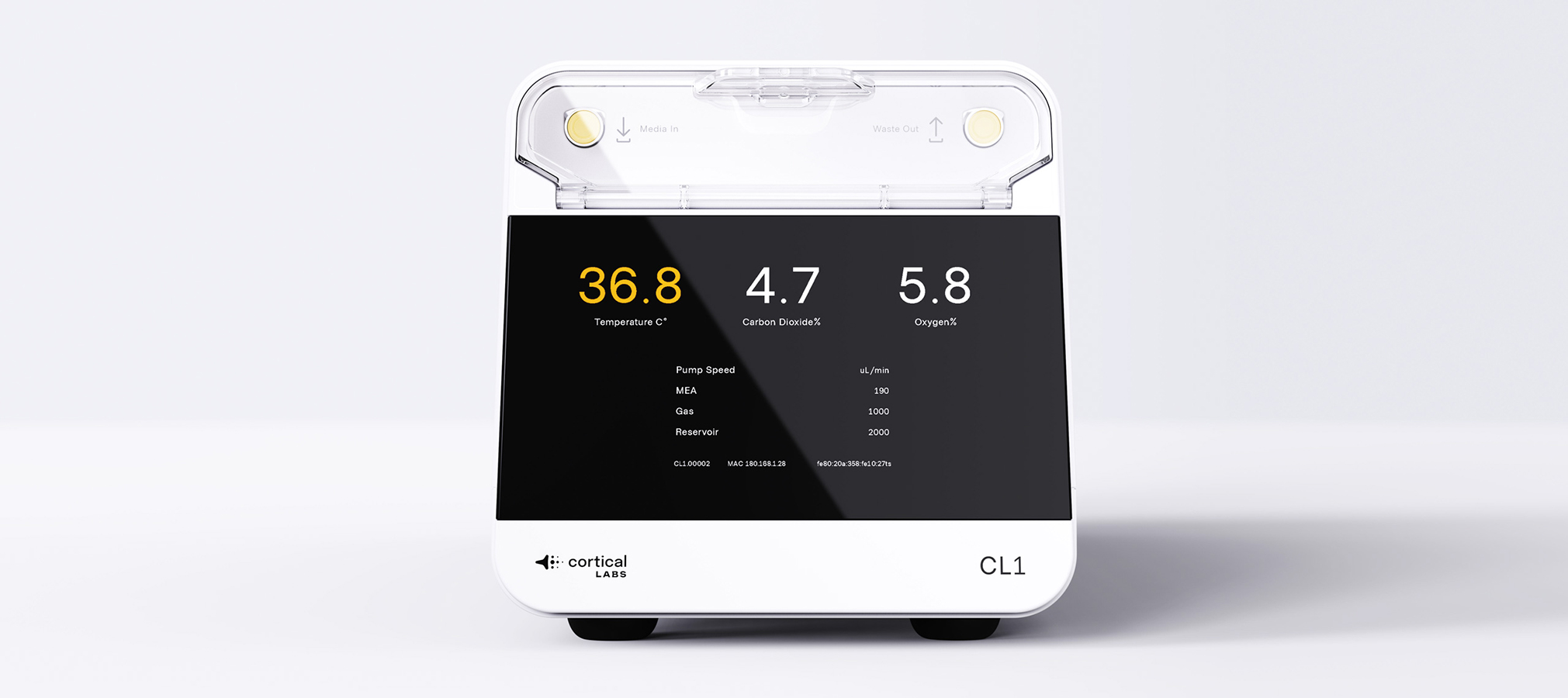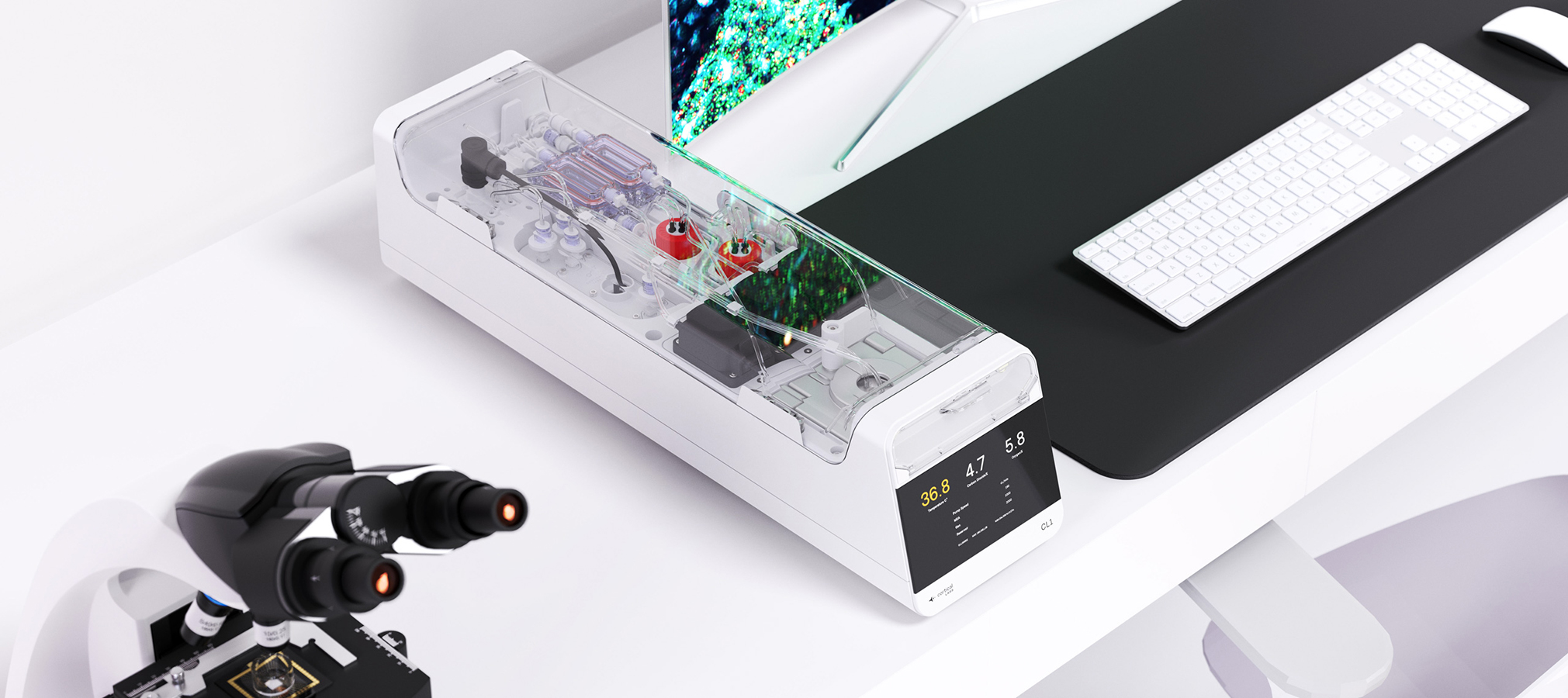The central design brief for CL1 was to transition a scientific prototype into the world’s first commercially available biological computer. The challenge was to engineer a robust, self-contained platform capable of sustaining living human neurons for months, enabling real-time closed-loop interaction with digital environments, and allowing researchers to deploy code directly to living cells.
This involved solving complex issues around biological containment, fluid dynamics, sterile handling, and interface usability. The goal was to unlock new frontiers in AI, drug discovery, and disease modelling, while offering a scalable, energy-efficient alternative to traditional systems and reducing reliance on animal testing.
A highly professional six-year design process was followed in collaboration with D+I (now Capgemini). The team was instrumental in defining product architecture, internal systems layout, aesthetic language, and usability for real-world research. Every subsystem was developed for biological compatibility, modularity, and long-term reliability—transforming a fragile lab prototype into a robust, manufacturable system. This clearly demonstrates a professionally executed and finished design.
The final design met and exceeded the brief. A modular enclosure supports both desktop and rack-mounted configurations, enabling individual or scaled deployment via the Cortical Cloud. A precision-controlled fluid management system sustains neural cultures for up to six months. Single-use sterile tube sets simplify setup and prevent contamination. A capacitive touchscreen provides intuitive local control and real-time monitoring.
CL1 is fully self-contained, with embedded processing, control, and data handling—requiring no external compute. It enables direct code deployment to living neurons, facilitating breakthroughs in AI and biomedical research. By offering a scalable, animal-free platform with significantly lower energy use than silicon-based AI, CL1 surpasses its original goals and establishes a new market for Synthetic Biological Intelligence—delivering novel functionality at a competitive price point.

